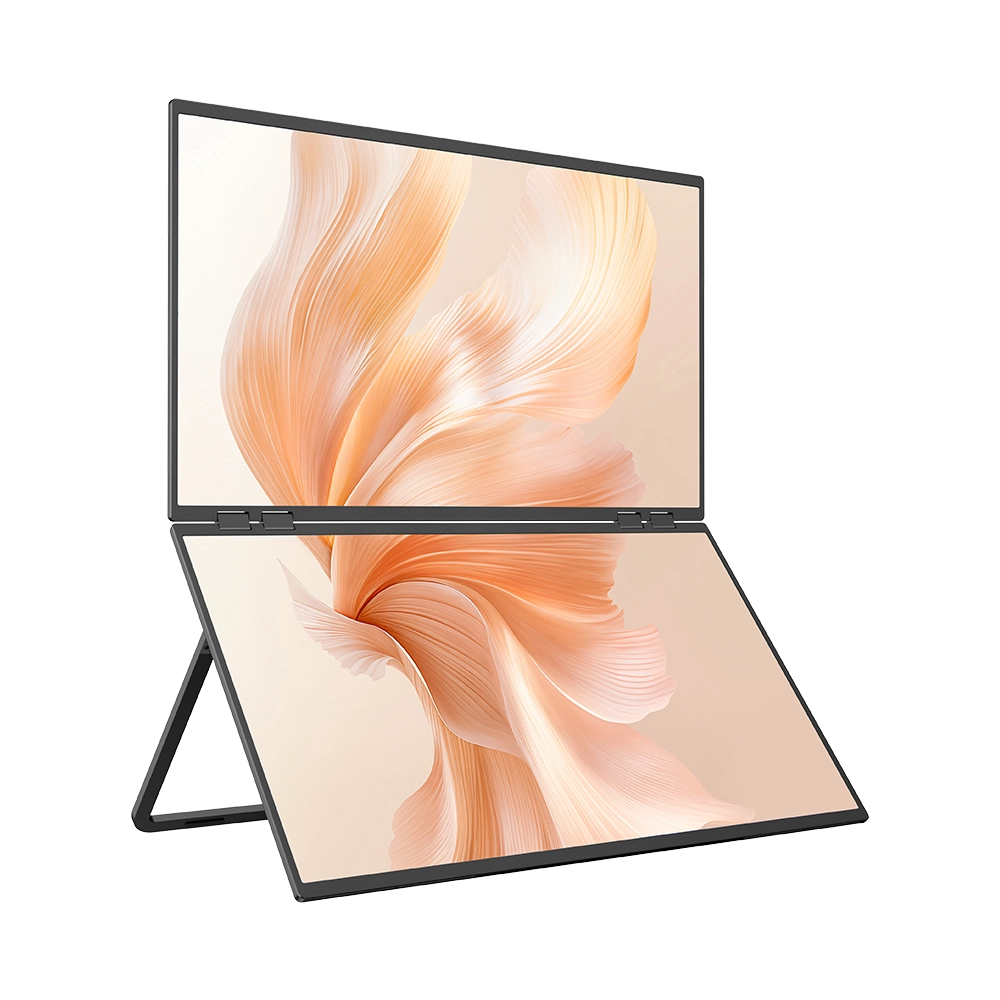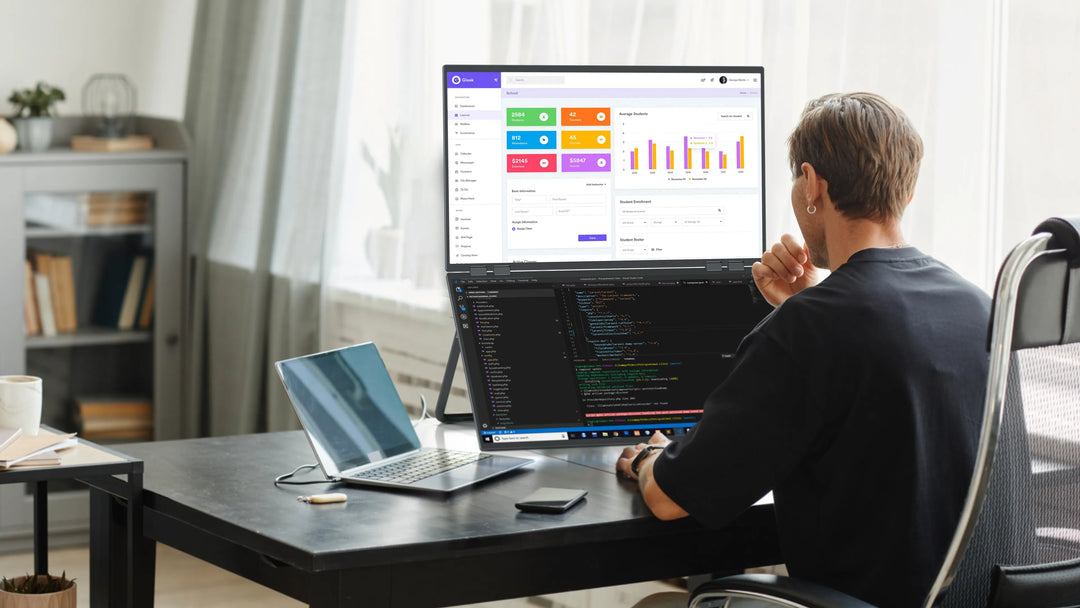60Hz VS 144HZ: Which Gaming Monitor Refresh Rate Should You Choose?
Your monitor's refresh rate is the unsung hero of gaming immersion. Think of it as your screen's heartbeat, the number of times it redraws the action every second directly shapes how real those headshots feel and how crisp that racing line looks. More refreshes mean smoother action, sharper movements, and tighter control. The holy trinity for competitive shooters or racing games where split-second reactions decide victory. But does jumping from 60Hz to 144Hz actually transform your gameplay, or is it hype? Let's break down what that really means for your setup and wallet.
What Is The Refresh Rate?
The refresh rate means how many times a display updates its image per second, measured in Hertz (Hz). You may see the "60Hz" (updates 60 times/second) or "144Hz" in many ads for computers, monitors, or other electronics. This metric is critical in scenarios requiring smooth visual transitions, such as gaming, video playback, or scrolling through content. For gaming monitors, a higher refresh rate (e.g., 144Hz) significantly enhances responsiveness and motion clarity. For instance, in a fast-paced shooter like Counter-Strike 2, a 144Hz monitor updates the image twice as fast as a 60Hz display, allowing players to detect enemy movements milliseconds earlier and react precisely. Conversely, a 60Hz monitor might struggle to keep up with rapid actions, causing motion blur or input lag, which could mean the difference between victory and defeat in competitive gameplay.
60Hz Gaming Monitor VS 144Hz Gaming Monitor

60Hz vs 144Hz - Monitor Latency
Lower Latency: 144Hz vs 60Hz Monitors
In obsolete technology, a 60 frames per second (FPS) refresh rate used to be considered a good feature. However, changing from a 60Hz to 144Hz monitor can transform the whole game playing experience, given that the accompanying PC is well balanced. When compared directly, the animation is much smoother in 144Hz than in 60Hz, in which the frames seem to be skipping. The system latency, and jump in response time, is also much faster in the 144Hz monitors than in 60Hz. This latency matters a lot in competitive games, making the 144Hz monitor preferable to gamers than the obsolete 60Hz.
In a game like Fortnite on Xbox, when you press the trigger to fire your weapon, a low-latency monitor will make your shot appear almost instantly, helping you hit fast-moving targets. On a high-latency monitor, there’s a delay, so by the time your shot registers, the enemy might already be out of your aim. With a low-latency display, you have a much quicker reaction time, giving you an edge.
Lower Input Lag and Ghosting: 144Hz vs 60Hz Monitors
Minimal input lag and ghosting, a situation in which a double image of an object or a ghost behind that object appears on the screen due to motion blur, is also observed by users in the 144Hz monitor. Ghosting is primarily determined by response time (how quickly pixels change color), measured in milliseconds (ms). While 144Hz monitors often have 1ms response times, cheaper models may use ‘MPRT’ or other marketing metrics that don’t reflect true performance. Ghosting is like trying to take a photo of a moving car and seeing a blur or a shadow behind it. On a 144Hz monitor, this blur is reduced significantly, making the car appear sharp even as it moves quickly across the screen. In fast-paced games, this clarity is crucial, especially when you’re trying to follow fast-moving enemies. 144Hz monitors are created with better technology which removes the possibility of lapsing below seven milliseconds.
Less Tearing: 144Hz vs 60Hz Monitors
The monitor which displays games at 144Hz is much less likely to stutter when the frame rate falls below 60fps than any less equipped computer. It also aids in reducing the appearance of screen tearing due to lower latency between monitor and CPU. Screen tearing is like trying to read a sentence in a book while the pages are turning too fast. You see multiple images overlapping, which makes it hard to focus. A 144Hz monitor helps prevent screen tearing by synchronizing the monitor’s refresh rate with your computer’s output, making sure the image on the screen is clear and fluid without any tearing. G-Sync (NVIDIA) and FreeSync (AMD) dynamically adjust the monitor's refresh rate to match the GPU's output, eliminating tearing and stutter. Look for monitors certified as ‘G-Sync Compatible’ or ‘FreeSync Premium Pro’ for optimal results.
60Hz vs 144Hz - Price Range
The price of a gaming monitor is influenced not only by the refresh rate but also by factors such as screen size, panel type, resolution, connectivity options, brightness and color performance, design and portability, brand, and additional features. Of course, within the same brand, if all other factors are the same but the refresh rate differs, the monitor with the higher refresh rate will definitely be more expensive, possibly by around $100.
Because of its standardization, the price of a 144Hz monitor has decreased consistently over the years. Most 144Hz monitors can be bought in the price range of 60Hz monitors, which has quite significantly increased its demand. Some of the features that are not present in 60Hz monitors but are available in 144Hz monitors are smoother animations, more minor screen tearing, less ghosting, and a competitive edge.
Under slightly different conditions, you might even find that a 144Hz monitor is cheaper than a 60Hz one. For example, the 60Hz UColor J5 delivers 4K UHD clarity, 100% Adobe RGB accuracy, and IPS-wide color consistency, tailored for creators who prioritize vivid detail over motion rates. VESA-mounted and built to last. It’s not a display, but a studio-grade tool for photographers, designers, and those who see color as truth.
60Hz vs 144Hz - Different Video quality
Between a 60Hz monitor and a 240Hz monitor, a 144Hz monitor offers the best of both worlds with color accuracy, crisp graphics, picture quality, and responsiveness. Because monitors with 144 fps display more images per second, their output is smoother, better, and more productive. However, it is essential to remember that it is not the quality but the fluidity of the image that is improved by the higher rate of hertz. The quality of the image is enhanced by the higher number of pixels, not FPS. A 60Hz monitor changes 60 pictures per second, whereas a 144Hz monitor changes 144 photos.
Think of watching a movie on an old, fuzzy TV (60Hz) versus watching the same movie on a brand-new, high-definition TV (144Hz). On the old TV, you might notice the picture jumping or flickering every so often, but on the new TV, the picture is clear and smooth, with no interruptions. This is similar to how the game animations look when you upgrade from 60Hz to 144Hz, the smoother, faster action makes the experience much more immersive.
60Hz vs 144Hz - Gaming experience
An average computer user may not perceive much difference between 60Hz and 144Hz monitors. Still, an experienced gamer, whose sole purpose is to play competitive and combat games, can tell the difference in an instant. 144Hz monitors allow gamers to play games more vigilantly and efficiently than gamers on 60Hz monitors.
Initially, 60Hz monitors were standard CRT (Cathode Ray Tubes) monitors, extending as high as 85Hz. But 144Hz monitors support many resolutions, which is why they are produced mainly by gaming affiliated monitor manufacturers.
In the 144Hz monitor, an image is displayed every 7th millisecond, whereas, in the 60Hz monitor, the average renewal of the image is every 16th millisecond. Therefore, the image appears to the human eye clearer and smoother on the 144Hz monitor than on the 60Hz one. If one is already in possession of a 60Hz monitor, one can turn indecisive when choosing between 120Hz and 144Hz monitors. However, a 144Hz monitor is slightly more expensive than both 120Hz and 60Hz monitors. But if the goal is to play the latest games, then opting for a 144Hz monitor would be most prudent.
A higher refresh rate on a 144Hz monitor means the image on the computer is updated quicker than on a 60Hz monitor, as only gamers can realize that every millisecond counts in the race towards victory in combative games. In games like League of Legends or Counter-Strike: Global Offensive, micro-movements are quite decisive towards the game's outcome. So, if a game outputs 300 FPS on a 60Hz monitor, the display will only show 60 FPS. Excess frames are either discarded (causing stutter) or split across refresh cycles (causing tearing). To fully utilize high FPS, match your monitor's refresh rate to the GPU's output.
Imagine playing a racing game. On a 60Hz monitor, when you steer left, there’s a slight delay before the car moves. On a 144Hz monitor, the car responds instantly as you turn the wheel. This is because the 144Hz monitor refreshes the image faster, reducing the time between your input and the on-screen action. In competitive games, even a fraction of a second can make a huge difference between winning or losing.
There is a general misconception that the human eye can only see up to specific FPS which has often been used to disappoint consumers from buying the updated version of monitors like 144Hz or 240Hz. However, that is not the case, and better frame rates always mean a better and smoother flow of pictures and videos. Beyond gaming, 144Hz improves daily tasks: scrolling web pages feel fluid, cursor movements appear instantaneous, and video editing timelines respond with precision. Designers benefit from smoother brush strokes in Photoshop and Premiere Pro.
60Hz vs 144Hz: Understanding the Differences
The difference between the 144Hz monitor and the 60Hz monitor is most apparent when the users shift back from the 144Hz monitor to the 60Hz monitor. According to the feedback, most users felt sluggish and hazy after returning to the 60Hz monitor display.
Another critical thing to remember is that if the buyer desires color accuracy and looks, a high-quality 60Hz monitor is an answer. However, for those looking for better performance, frame rate, and competition edge, a 144Hz monitor has been such users' choice for many years now.
The good thing about these monitors is that they are portable gaming devices. So, irrespective of which CPU or output devices one has, monitors, can always be replaced or updated. However, the twist is, updating the monitor from 60Hz to 144Hz is not enough for the smooth running of games. The accompanying graphics card should run at least 60 frames or possibly higher. Anyway, the performance can check the FPS in a match through numerous software. The updated portable gaming monitors do not depend on a graphics card or CPU to run. But if the intention is to play games smoothly and more efficiently than on the previous monitor, then the accompanying input devices must be kept in mind.
If you're still looking for the biggest difference between 60Hz and 144Hz gaming monitors, we've summarized an explanation that clearly highlights the distinction between them.
|
Feature |
60Hz Monitor |
144Hz Monitor |
|
Refresh Rate |
60 FPS |
144 FPS |
|
Smoothness |
Can cause motion blur and lag |
Much smoother animation and faster action |
|
Latency |
Higher latency, slower response |
Lower latency, faster response |
|
Input Lag & Ghosting |
Higher input lag and ghosting |
Minimal input lag and reduced ghosting |
|
Screen Tearing |
More likely to experience tearing |
Less screen tearing due to synchronization |
|
Gaming Experience |
Suitable for casual gaming |
Ideal for competitive and fast-paced games |
|
Price |
More affordable |
More expensive due to higher refresh rate |
|
Image Clarity |
Sufficient for general use |
Better clarity with faster image updates |
|
Ideal For |
Casual gamers, basic use |
Professional gamers, fast action games |
|
Adaptive Sync Support |
Rare |
Common (FreeSync/G-Sync) |
|
Typical Response Time |
5ms |
1ms |
What's the Difference Between FPS and Refresh Rate?
Low GPU FPS + High Refresh Rate
If your GPU is only pushing 30fps while your monitor runs at 60Hz, you’ll notice a slight stutter in motion. Since the monitor is locked at refreshing 60 times per second but only gets half the frames it needs, it’ll duplicate each frame twice to fill the gaps. This creates a "judder" effect, especially in fast-paced scenes.
High GPU FPS + Low Refresh Rate
Flip the script, if your GPU cranks out 120fps but your monitor is capped at 60Hz, the extra 60 frames get thrown away every second. The monitor physically can’t keep up, so those "ghost frames" are essentially wasted. It’s like revving a sports car in traffic, your horsepower doesn’t translate to speed.
The Fix - Sync Technologies
This mismatch is why NVIDIA’s G-SYNC and AMD’s FreeSync exist. They act as a real-time handshake between your GPU and monitor. If your GPU spits out 120fps and your display supports 120Hz+, these technologies ensure every frame gets screen time, no duplicates, no drops. Think of it as a DJ syncing beats perfectly to the crowd’s energy.
Difference Between FPS and Refresh Rate
FPS (frames per second) = GPU muscle (how many images your graphics card can cook up).
Hz (refresh rate) = Monitor capability (how fast the screen can flip through those images).
Your gaming smoothness is capped by the weaker link. Want 144Hz buttery gameplay? You’ll need both a 144Hz monitor and a GPU strong enough to hit 144fps. Skimp on either, and you’re stuck at 60Hz-tier performance.
You may understand the difference between FPS and refresh rate better after reading the following table.
|
Comparison |
FPS (Frames Per Second) |
Refresh Rate (Hz) |
|
Definition |
Number of frames rendered per second by the GPU |
Number of times the display refreshes per second |
|
Unit |
Frames per second (FPS) |
Hertz (Hz) |
|
Determined by |
GPU (Graphics Processing Unit) |
Monitor hardware |
|
Impact |
Affects game smoothness |
Affects screen display smoothness |
|
FPS > Refresh Rate |
May cause screen tearing |
Cannot display extra frames |
|
FPS < Refresh Rate |
May cause stuttering |
Only displays available frames from GPU |
|
Optimal Match |
FPS and refresh rate should be close |
High refresh rate is ideal for high FPS gaming |
Why FPS and Refresh Rate Matter for Gamers
High refresh rates (120Hz/144Hz) aren’t just about bragging rights, they slash input lag and make fast movements crisper (e.g., spotting enemies quicker in shooters). But without a GPU to match, you’re paying for a Ferrari and driving it in first gear.



















Leave a comment